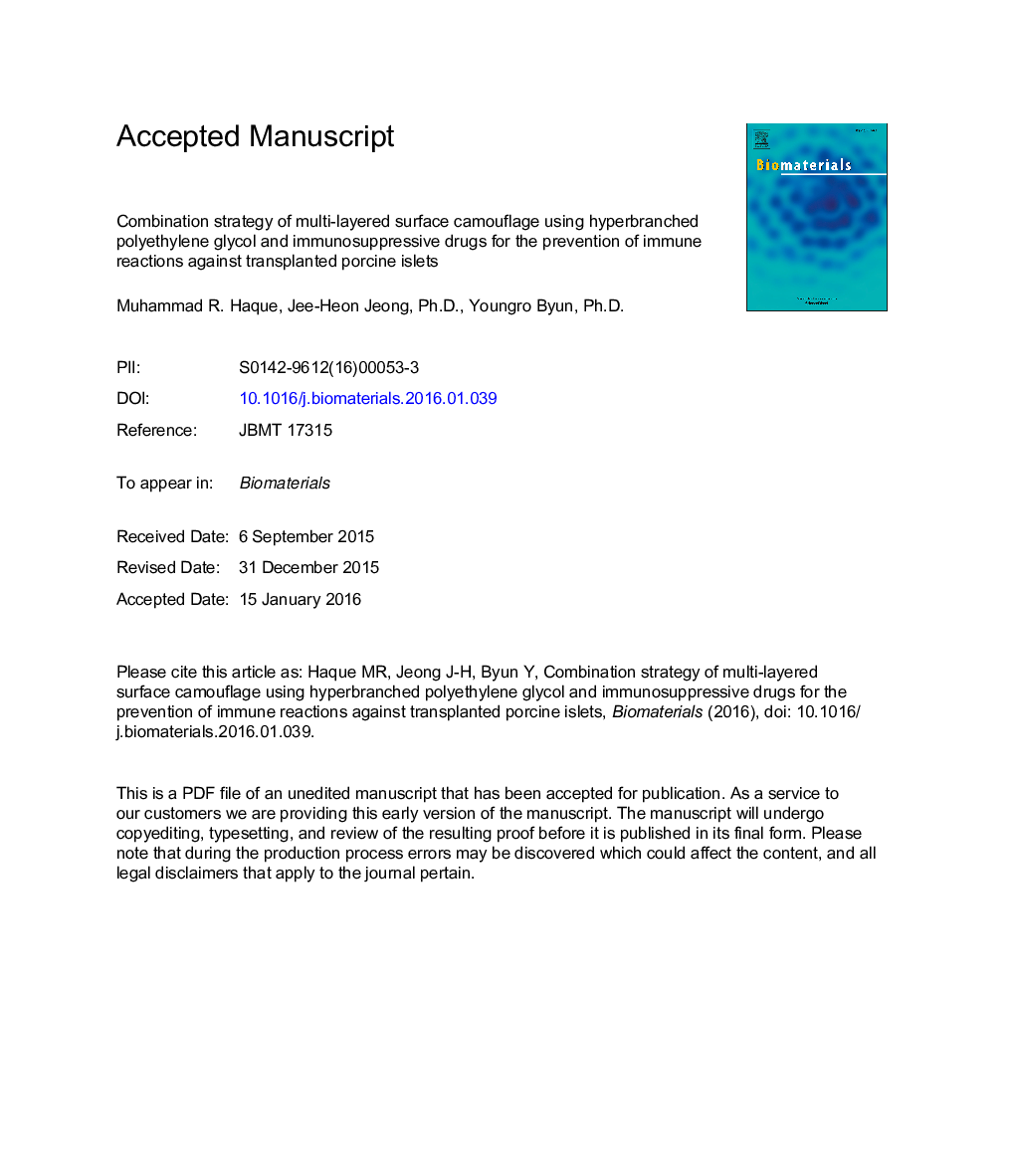| Article ID | Journal | Published Year | Pages | File Type |
|---|---|---|---|---|
| 6485105 | Biomaterials | 2016 | 45 Pages |
Abstract
This study suggests a novel method of stabilizing fragile porcine islets to prevent the dissociation after isolation and reducing immune cell invasion in a combination therapy of 'surface camouflaging' and immunosuppressive drugs (FK506, Rapamycin, MR-1, anti-CD19 mAb, and Clodrosome®) to effectively alleviate overall immune reactions against xenotransplanted porcine islets. The surface camouflage of pancreatic islets using biocompatible materials improved stabilization of pancreatic islet and prevented the infiltration of immune cells. Firstly, the surface of porcine islets was camouflaged by SH-6-arm-PEG-lipid and gelatin-catechol (artificial extracellular matrix) in order to stabilize the fragile isolated islets. Secondly, three different PEG layers (6-arm-PEG-SH, 6-arm-PEG-catechol, and linear PEG-SH) were chemically conjugated onto the surface of the stabilized porcine islets. Both artificial extracellular matrix (artificial ECM) and PEGylation effectively covered the surface of porcine islets without increasing the size of the whole islet. In addition, the viability and functionality of the islets were not affected by this multi-layer surface modification. The multi-layer modification significantly reduced the attachment of human serum albumin, fibronectin, and immunoglobulin G in comparison to the control collagen surface. The combination effect of multi-layer PEGylation and cocktailed immunosuppressive drugs on the survival time of the transplanted islets was assessed in a xenogeneic porcine-to-mouse model. The median survival time (MST) of 'artificial ECM + PEGylation' group was 4-fold increased compared to that of control group. In addition, the MST of 'artificial ECM + PEGylation + drug' group was 2.16-fold increased, compared to the 'control + drug' group. In conclusion, we proposed a novel porcine islet transplantation protocol using surface multi-layer modification and cocktailed immunosuppressive drugs, for stabilization and immunoprotection against xenogeneic immune reactions.
Related Topics
Physical Sciences and Engineering
Chemical Engineering
Bioengineering
Authors
Muhammad R. Haque, Jee-Heon Jeong, Youngro Byun,
